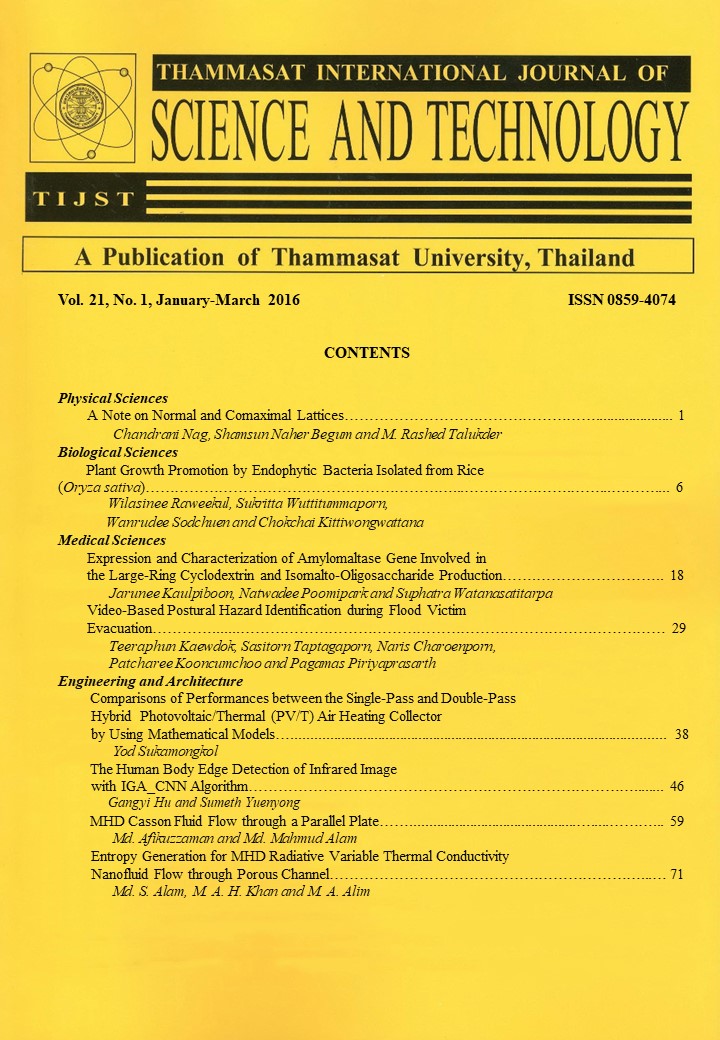Comparisons of Performances between the Single-Pass and Double-Pass Hybrid Photovoltaic/Thermal (PV/T) Air Heating Collector by Using Mathematical Models
Main Article Content
Abstract
The hybrid photovoltaic/thermal (PV/T) air heating collector consists of a conventional photovoltaic (PV) module and an attached air flow channel with internal working fluid flowing to extract thermal energy from the PV module; therefore, the electrical efficiency of the PV module can be increased by reducing its operating temperature. This paper presents the comparison results of the predicted performances of single-pass and double-pass PV/T air heating collectors by using the developed simulation models. Three types of PV/T collectors are considered: type A (the air flow channel is above the PV modules), type B (the air flow channel is under the PV modules) and type C (the air flow channels are above and under the PV modules). Based on energy-balance equations, the mathematical models for each component in the PV/T collector, such as glass cover, air flow channel, PV/T absorber and back metal plate, have been developed. Using the same meteorological data input, the simulated results indicate that the maximum electrical efficiencies of collectors type A, B and C are 4.6%, 5.2%, and 5.0%, respectively, while the thermal efficiencies of these collectors are up to 39%, 46%, and 59%, respectively. It is obvious from the results that the configurations in the PV/T air heating collector have influences on their electrical and thermal performances.

